WATER AND POWER – MY ENCOUNTERS WITH SMALL HYDRO DAMS

Greg Daspher drives 50 km each way from Squamish almost every day in the high water season to kayak the Callaghan creek. This river is at immediate threat for a hydro dam.
Calling European Alps my home left me stunned by the amount of unpopulated nature and free-flowing rivers in British Columbia. European kayakers can only imagine how much of our good white-water has been lost to the dams. Yes, I know I use electrical power every day and I’m aware that there’s a need to compromise in contemporary world, but who can blame me for loving the untouched nature? BC still has plenty of it and I feel serenity and amazement every time I find myself far away from anything reminding me of human civilization, except for maybe an old deserted logging road, which often tends to present the only access to the rivers here.
While big dams’ impacts are quite evident, from big populations of people having to be relocated, huge changes to the environment and even effects on climate, there seems to be much less general public concern regarding small dams and diversions. Why should we care about a small creek in a middle of nowhere, right?
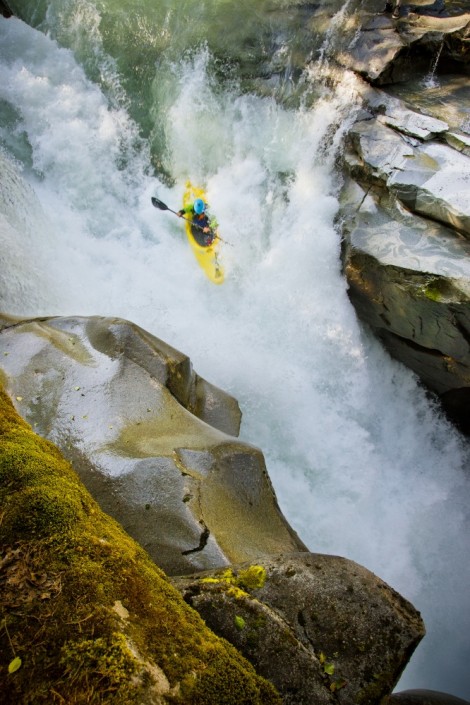
Me on a renowned Ashlu rapid 50/50. A diversion dam has been built on Ashlu creek in 2009. Being a kayakers’ classic, kayakers (or somebody aware of the issue) managed to negotiate flow release dates for recreational kayaking.
Hydro dams and diversions do not fit best into the wild environment and they tend to make river sections unrunnable for kayakers. Those are good enough arguments to have me opposing them, but they aren’t the only cons there are. Just from environmental point of view, small dams also fiercely affect fragile river ecosystems and can have devastating effects on fish populations. Most of them being hidden from our sight of view doesn’t change that fact. Read THIS report for a reference of incidents just around Squamish. It is also notable, that many of these projects produce most of their power at a time of spring run-off, time when there is no shortage of power generated by existing facilities. Finding a right balance between satisfying power needs while trying not to leave major ecological impact is challenging enough, but there are some deeper concerns involved with the trends of hydro power plant development, not only in BC, but anywhere in the world.
But let’s go back to a beautiful July morning, when me and a few kayaker buddies decided to go run a small creek named Skookum, located just a few kilometers outside of Squamish. We knew that not too long ago Run of River Power inc., a private energy company, started building a diversion dam far above the classic kayaking section of this very small creek. Having experience with European construction workers and security procedures involving such projects I expected being rejected before even asking about letting us kayak the section, on what would probably be a last attempt before they dam it. Instead we were welcomed by very nice workers, who were all trying to help us get to the river. I remember one of them saying “we are locals too and we are trying to work in the best interest of land and our community.” At the end we didn’t get to kayak, because we couldn’t find a put-in, after the landscape has been changed so much by construction work, that we couldn’t match it to the old river descriptions. It was my only day off for a while so sadly we didn’t make it back before the water level dropped too much.
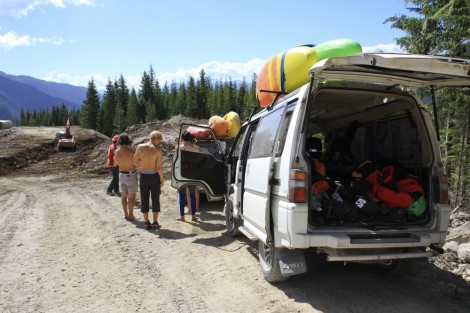
Looking for a Skookum creek put-in. The old beta said drive to the end of the road. New road was built in a matter of months and is far longer than the old one.
Interesting is a story of Ashlu creek. Innergex is a company that owns the controversial Ashlu diversion. After strong opposition from kayak community, a compromise agreement has been made, which granted kayakers flow release dates. At the end kayakers were left with even more days with runnable water levels than before. It seems that a great battle has been won and a case example set for better relations between kayakers and any energy corporation.
It almost seems like we should applaud these corporations for their concerns for the local communities and kayakers, but who especially needs applauding are their PR departments. This situation inherently reminds me of how “philanthropic” financial institutions, like Rockefeller foundation, supported anthropological researches to better understand and communicate with indigenous people in faraway lands. Of course the agenda there was to avoid any resistance and to optimize conditions of exploitation of these lands.
After asking what do local communities, local environment and society in general gain with these interventions in nature, it is clear that something smells fishy. Quoting Hydropower Reform Coalition on a case of Washington State, about twice as much energy could be made just by improving efficiency of existing dams, than as building dams on potentially exploitable rivers. Energy corporations’ major argument pro building these is also providing jobs to locals. The fact is that most of workers on these projects aren’t locals and the jobs are available only for a time of construction. I believe that local communities can lose a lot more in long term by scaring their beautiful untouched nature and making it less attractive for tourism. Do locals get cheaper power after construction is done? Who is making profit here? If energy corporations are making profit, they are making it by selling power to faraway lands (because BC has enough power in time of spring run-off LINK and that’s the time when most excess energy is produced by small hydro dams) – and nobody but they seems to be making profit of it. Learning all that makes it clear that somebody did a really good job in “educating” locals, fishermen, environmentalists and us kayakers that in fact we are scoring a good deal.
Should we really let ourselves be silenced for getting some treats? The big question is where does this trend lead to? Maybe today these companies aren’t making much profit of it. But imagine the world decades from now. Who knows what can happen. Northern countries have plenty of water now, but the climate is changing and the glaciers are melting fast. What does privatization of water sources lead to in times when water can’t be taken for granted any more?
I’m happy to see there is more and more concern and awareness about this issue. I love a short educational video Hydro Power Reform has published on vimeo: Small Hydro Power. There has also been a noticeable revolt from the local kayaking community in the Southeast BC, though it has been largely limited to the rivers that are often used for recreational purposes. Cheers especially to the efforts of Steve Arns, Ric Moxon and other local kayakers for their swift and strong opposition to Innergex’s consideration of diverting one of Southeastern BC’s most kayaked and overall most impressive runs around, the Callaghan creek. If they can divert a river with such importance to us, kayakers will be shown to have no real power at all. Join a facebook page Save the Callaghan and educate yourself to help with the cause. The Callaghan race saw the most racers in its 4-year history so far. 52 competitors showed up, not just to compete, but to show tribute to this amazing creek and help support the efforts to leave this creek free-flowing. We can’t do much if we are few, but these numbers and the efforts of some people leave space for optimism.
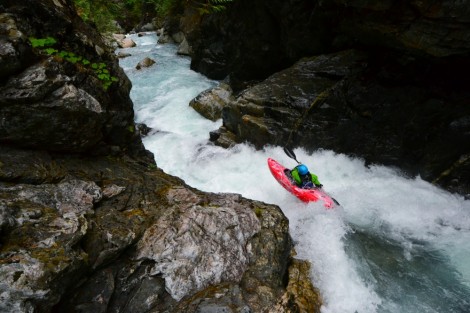
Free flowing, remote and extremely beautiful. Tatlow creek is pure heaven for kayakers. Photo credit Jordan Bastin.
comment
Please Leave a Reply
TrackBack URL :









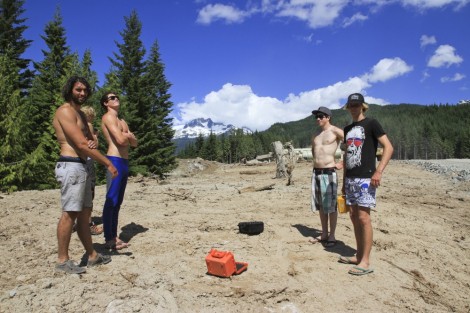
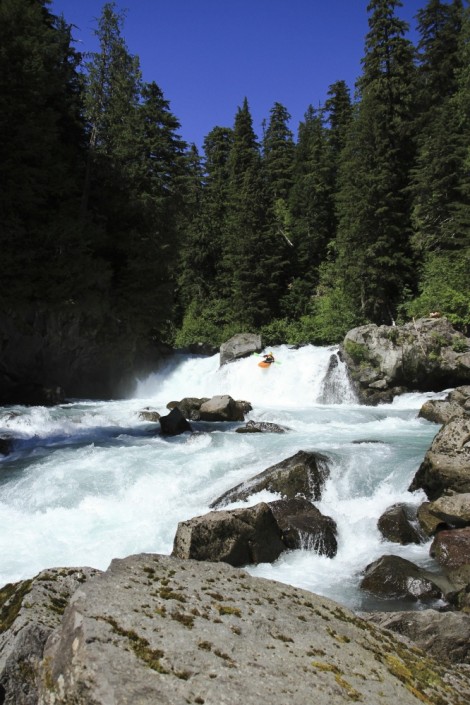
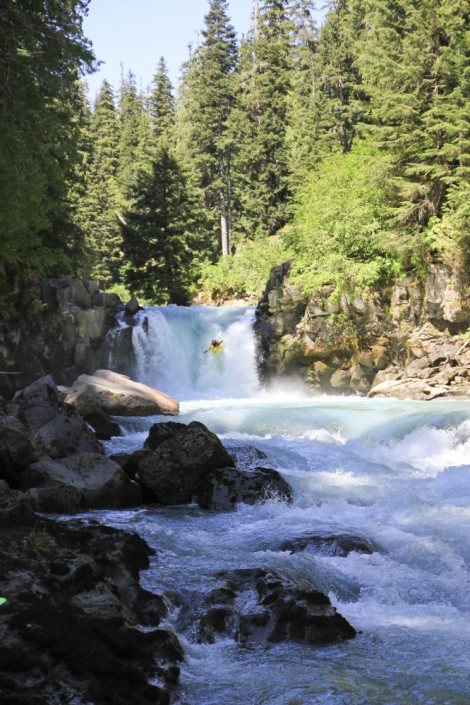
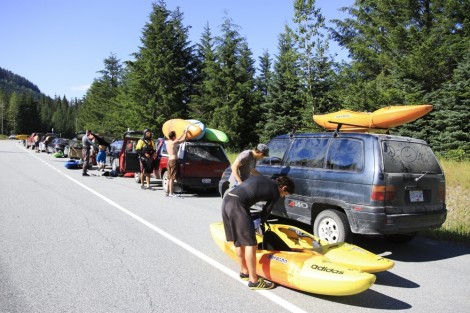
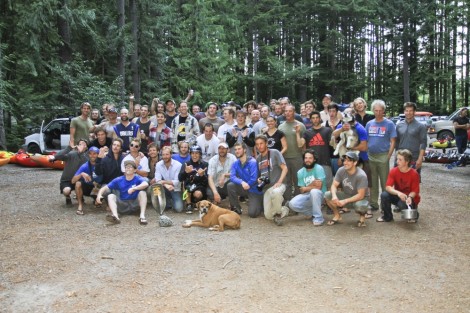
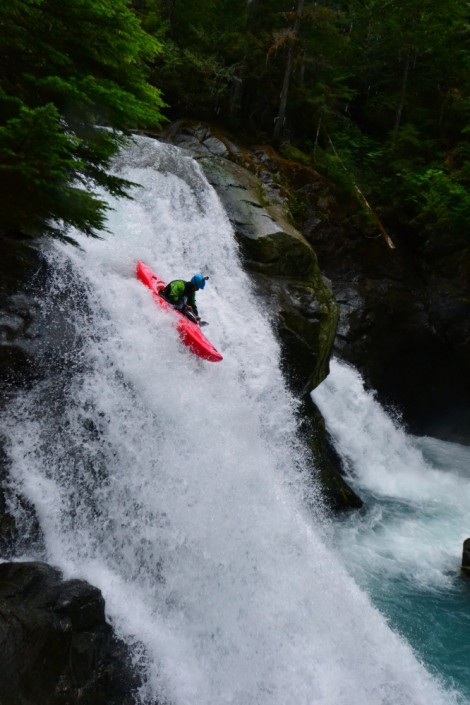
Thanks for this. You are right that kayakers need to make a stand if they want to save the rivers they enjoy. The sad fact is that kayaking has very little economic importance when compared with other water uses such as power generation and fishing, however valuable the experience is to this small group. Here in the UK, it is virtually impossible to install a run-of-river hydro on a major fishing river without masses of mitigation measures and negotiations with local fisheries management bodies. That’s because fishing is very valuable to the local economy – some prime beats costs thousands of pounds to fish, for even a week. However rivers with impassable barriers to migratory fish (of the kind kayakers enjoy – waterfalls) have very few defenders, but they are avid defenders!
In the UK small hydro is made economical by government incentives – at the moment it’s really a kind of experiment I think, just like wind power to see what we can make of it. One route that is being developed is using low-head turbines such at the Archimedean screw turbine on main stem rivers. These turbines are purported to allow fish to pass downstream through them unharmed, but this does not remedy the effects on upstream migrants, the depleted reach or kayakers. Happily though most of the historic mill sites where these are being installed are not much fun for kayaking. There is a growing body of scientific research into the potential impacts of small hydro, for example http://www.loughs-agency.org/ibis/the-project/research/the-effect-of-small-scale-in-stream-hydro-schemes-on-riverine-fishes
Hopefully we can elucidate some of the ecological problems, but the bigger question of whether small hydro is an effective way of meeting energy demands remains for the economists and engineers to answer.